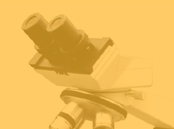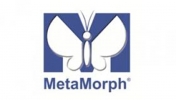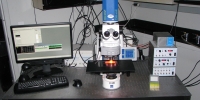McTips_2025
McTips_2025 http://confocal.jhu.edu/mctips/mctips_2025
See http://confocal.jhu.edu/mctips including both links to 2023 etc near the top and extensive content.
Multiplex fluorescence microscopy (web) http://confocal.jhu.edu/mctips/multiplex ... in addition to BV's could add some CPNs, StarBrights, NovaFluors, SuperBrights, Spark's, Alexa Fluor and/or Aluora TSA, etc.
As usual, newest content at the top (Jan 2025 at the bottom).
|
20250311Tue - recycling an email to provide summary of our main 3 microscopes and some tips (mostly redundant to other tips on this and McTips 2024, McTips pages). Ross 910 (Service corridor, between the ross service elevators) Leica SP8 confocal inverted microscope http://confocal.jhu.edu/current-equipment/leica-sp8-confocal-microscope $30/hr work hours, $22/hr night and weekends.
FISHscope – widefield microscope (compete with Jared for time???) http://confocal.jhu.edu/current-equipment/fishscope much faster than confocal. $10/hr
Ross 913 (front hallway) Evident Scientific (ex Olympus) FV3000RS confocal inverted microscope http://confocal.jhu.edu/current-equipment/fv3000 $30/hr work hours, $22/hr night and weekends. Of the three microscopes; confocal is sexier and “pinhole blocks out of focus light” is useful and (on good day) confocal is ~17% higher resolution than widefield; widefield is a lot faster. For basic imaging, the 2 confocals are comparable, 20x/0.75NA objective lenses. Our FISHscope 20x pixel size is 324nm XY, somewhat undersampled compared to resolution limit, but pigger pixels enable more photons per pixel, so faster acquisition (camera is also ~2x quantum efficiency over confocal detectors). For high resolution coverglass-specimen-slide, the Leica with 63x/1.40NA objective lens may produce slightly higher resolution. Be sure to use #1.5H (170=/-5um) coverglass and refractive index 1.515 mounting medium (ex: ThermoFisher Prolong Glass, with appropriate amount of time for the volatile compound to outgas into a large volume of air for the media to harden to 1.515 … might take several days, even if the data sheet claims faster … also bigger coverglass specimens need more time to outgas from the center). For live specimens at moderate-high resolution, the FV3000RS has three Silicone Oil objective lenses and R.I. 1.405 silicone oil – in theory better refractive index for live cells, spheroids, organoids. I note that Inagaki et al 2024 ( https://doi.org/10.1101/2024.09.13.612584 ) reported cells and spheroids are closer to transparent with R.I. 1.397 culture media (mounting media), implying Olympus should sell R.I. 1.397 immersion silicone oil. Inagaki only test single lot from a few manufacturers of BSA. Good news, one worked (19% BSA), bad news is Japanese vendor and (I hypothesize) every lot from every vendor will vary in live cell compatibility (viability, proliferation) and then how a lab stores the reagent will affect how long (or brief) it is usable over time. As a special example of sensitivity, FISHscope acquires single molecule RNA FISH images much faster and better than the confocal microscopes – my former supervisor here (before G.I. P30 Center grant money ran out) Bin Wu provided me with slides I did on all three. Also several users of RNAscope (aka RNA$$$cope since higher price than Bin’s approach) slides much better on FISHscope than confocal. All three microscopes work well for immunofluorescence microscopy (rule of thumb; one mRNA è 900 protein molecules). Quick pricing tip for immunofluorescence, focusing on ThermoFisher, but other vendors have similar pricing.
Per slide Brightness comment Alexa Fluor 488 secondary antibody $1.00 1x Recombinant AF488 2nd Ab $1.00 1x Recombinant should be more reproducible and no more dead donkeys, goats, rabbits, mice, etc. Alexa Fluor PLUS 2nd Ab $1.30 3x to 7x Small price increase, big time savings (or more signal in same amount of time) SuperBoost tyramide signal amplification $6.50 ~20x About 3x brightness to cost ratio, big time savings, easily multiplexed (I like PeroxAbolish to kill HRP). Aluora tyramide signal amplification $11.00 ~40x(?) Marketing for FFPE tissue sections (and EVOS S1000 filter sets) similar to Alexa Fluor dyes, so any FL microscope. ==> TSA – see also Janis Taube’s 8plex Akoya Opal TSA (Berry et al 2021 Science “AstroPath”). Many other TSA vendors. In principle could use the fluorophores as ‘mass tags’ for TurboID like proximity mass spectrometry (usually biotin-tyramide; could do biotin-fluorophore-tyramides).
|
|
20250227Thur computer tips I have in the past typically used MiniTools Partition Wizard software and USB -> drive cable/external interface to clone old HDD, SATA-6 SSD, or NVMe M.2 drive(s) onto new drive(s) [one at a time]. My current experience now is to use Cloner devices - that is hardware only, to clone onto a new drive. For example ~$89 (current price) for https://www.amazon.com/dp/B0CJ4RSZ3R NVMe to NVMe Cloner, such as current home PC 4TB NVMe drive onto a new NVMe drive (PC has been acting flaky). The old drive will be labeled as such and retired to my "storage closet". A couple of tips for the above NVMe-to-NVMre Cloner:
A SATA to SATA docking station example is https://www.amazon.com/dp/B07CSG4XM4 SATA to (or from) NVMe M.2 adapter ("docking station") https://www.amazon.com/dp/B0BDLZQCJY * look for adapter / docking station / etc that enables cloning without a PC. Current use - the NVMe-to-NVMe Cloner I am using right now to fix the third of four NCMe drives I accidently "bricked" by deleting a partition using Microsoft Storage Spaces (Win 10 control panel -- a way to generate a "soft RAID" array -- though with Microsoft's usual minimally useful product, mediocre performance ensued). It is likely that "MSS" marked each of the four drives as unsuable. I hypothesized (I'm a scientist - I use the "H word" instead of speculate) that I could buy an identical fifth NVMe drive, use it new as the cloning source and the standalong NVMe-to-NVMe Cloner to "fix" each of the four drives. Working! (still on #3 -- each NVme is taking about 40 minutes to clone -- in this care repair). At ~$140 per NVMe drive this is a great result. I will STOP using MSS and wish I had not bothered testing it with these drives. Single drive performance: HDD 100 - 200 MBps (0.1 to 0.2 GBps) SATA-6 SSD 500 - 600 MBps (0.5 to 0.6 GBps) NVMe M.2 PCIe gen3 1.5 to 3.0 GBps (and write speed may be slower than read speed) NVMe M.2 PCIe gen4 5.0 to 7.0 GBps (and write speed may be slower than read speed) NVMe M.2 PCIe gen5 12 to 14.0 GBps (and write speed may be slower than read speed) Faster and bigger capacity pricier. Gen 5 drives may heat up a lot more than earlier (and gen4 more than gen3) -- need heat sink or maybe heat sink plus fan for gen45 and even gen4 (additional expenses). If space is available, I attach a heat sink even to gen3 NVMe drives.
|
|
20250110Fri - #1.5H high precision coverglasses - prices vary
|
|
Polymer Dots aka PDots - Guo 2024 and Bio-Rad StarBright fluorophores .. Kuo 2022 add non-fl chains to increase brightness by decreasing quenching 20250103F - Kuo 2022: "We first explore the importance of reducing aggregation-induced self-quenching in a non-FRET Pdot by incorporating different amounts of a nonabsorbing polymer to optimize Pdot brightness." Guo 2024 SciAdv mention on page 2 that their (Daniel T. Chiu kab, U Washington Seattle) older polymer dyes are the basis of Bio-Rad StarBright fluorophore family (see http://confocal.jhu.edu/mctips/multiplex ): Guo Z ... Chiu DT, Vaughan JC 2024 Highly multiplexed fluorescence microscopy with spectrally tunable semiconducting polymer dots. Sci Adv 10: eadk8829, https://www.science.org/doi/full/10.1126/sciadv.adk8829 (open access - suppl pdf 23 MB).
Combining excitation and emission multiplexing enables the creation of a very large color panel that numbers in the many tens. These favorable properties of Pdots have now facilitated highly multiplexed flow cytometry analysis of single cells, and Pdots are commercially available as the Star-Bright series {StarBright} from Bio-Rad, with over 30 colors launched thus far. Unlike many of the tandem dyes used traditionally in flow cytometry, most Pdots have good photostability and may enable highly multiplexed fluorescence imaging. In addition, Pdots can be designed with further improved photostability or used under conditions that improve their photostability (22). *** Below is what looks to me to be a key recent discovery: adding NON-Fluorescent polymer chains increases PDot fluorescence intensity by decreasing fluorophore chains quenching. Zhang J, Yu J, Jiang Y, Chiu DT 2022 Ultrabright Pdots with a Large Absorbance Cross Section and High Quantum Yield. ACS Appl. Mater. Interfaces 2022, 14, 11, 13631–13637. https://pubs.acs.org/doi/10.1021/acsami.1c25215 Semiconducting polymer dots (Pdots) are increasingly used in biomedical applications due to their extreme single-particle brightness, which results from their large absorption cross section (σ). However, the quantum yield (Φ) of Pdots is typically below 40% due to aggregation-induced self-quenching. One approach to reducing self-quenching is to use FRET between the donor (D) and acceptor (A) groups within a Pdot; however, Φ values of FRET-based Pdots remain low. Here, we demonstrate an approach to achieve ultrabright FRET-based Pdots with simultaneously high σ and Φ. The importance of self-quenching was revealed in a non-FRET Pdot: adding 30 mol % of a nonabsorbing polyphenyl to a poly(9,9-dioctylfluorene) (PFO) Pdot increased Φ from 13.4 to 71.2%, yielding an ultrabright blue-emitting Pdot. We optimized the brightness of FRET-based Pdots by exploring different D/A combinations and ratios with PFO and poly[(9,9-dioctylfluorenyl-2,7-diyl)-co-(1,4-phenylene)] (PFP) as donor polymers and poly[(9,9-dioctyl-2,7-divinylenefluorenylene)-alt-co-(1,4-phenylene)] (PFPV) and poly[(9,9-dioctylfluorenyl-2,7-diyl)-alt-co-(1,4-benzo-{2,1′,3}-thiadiazole)] (PFBT) as acceptor polymers, with a fixed concentration of poly(styrene-co-maleic anhydride) as surfactant polymer. Ultrabright blue-emitting Pdots possessing high Φ (73.1%) and σ (σR = σabs/σall, 97.5%) were achieved using PFP/PFPV Pdots at a low acceptor content (A/[D + A], 2.5 mol %). PFP/PFPV Pdots were 1.8 times as bright as PFO/PFPV Pdots due to greater coverage of acceptor absorbance by donor emission─a factor often overlooked in D/A pair selection. Ultrabright green-emitting PFO Pdots (Φ = 76.0%, σR = 92.5%) were obtained by selecting an acceptor (PFBT) with greater spectral overlap with PFO. Ultrabright red-emitting Pdots (Φ = 64.2%, σR = 91.0%) were achieved by blending PFO, PFBT, and PFTBT to create a cascade FRET Pdot at a D:A1:A2 molar ratio of 61:5:1. These blue, green, and red Pdots are among the brightest Pdots reported. This approach of using a small, optimized amount of FRET acceptor polymer with a large donor–acceptor spectral overlap can be generalized to produce ultrabright Pdots with emissions that span the visible spectrum. Key text: "We first explore the importance of reducing aggregation-induced self-quenching in a non-FRET Pdot by incorporating different amounts of a nonabsorbing polymer to optimize Pdot brightness." *** More on StarBright fluorophores (see also multiplex URL cited above) - partial text below, see web pages for more information.
StarBright Fluorescent Polymer Dots (pDots)
|
|
full text {with sopme comments from GM in brackets} https://fluorofinder.com/dyes-for-spectral Expansion of Fluorophores for Spectral Flow Cytometry March 20, 2024 In 2004, Perfetto and Roederer published the first paper detailing a 17-color flow cytometry experiment by incorporating a relatively new octagon emission array off the violet 405nm laser (1). The additional laser and 8 additional channels for violet excited fluorophores facilitated the use of 6 Qdot Nanocrystal conjugates in the first big reach towards high parameter flow cytometry assays. In 2012, BioLegend released the first Brilliant Violet conjugates to make 18 color flow cytometry more accessible to researchers by offering an alternative to QDots. However, the big turning point was the release of the Cytek Aurora in 2017. A mere 7 years later, the first 50 color assays are being published on the BD Discovery S8 system (2). The Cytek Aurora, Sony ID7000, and BD Discovery S8 are all poised to take flow cytometric assays into the new age of big data and the untangling of complex biological relationships. As the capabilities of instrumentation have grown, reagents must rise to the challenge with direct antibody conjugates with fluorophores developed with an eye to spectral diversity and spectral stability. Commercial reagent manufacturers face several challenges to create fluorophores that improve upon current standards, including: Having discrete excitation by a single laser to reduce cross-beam excitation In this article, we highlight reagents that are paving the way to meet the needs of spectral cytometry.
Fluorophores Made of Simple Organic Chemical Structures In a quick response to the increasing demand for a greater repertoire of fluorescent emission profiles, researchers first looked to simple existing organic fluorophores that could emit light at wavelengths between those of traditional fluorophores, like PE, APC, PerCP tandems and the Brilliant Violet and UV dye families. These dyes could be quickly and easily conjugated to primary antibodies and validated in multicolor combinations. BioLegend released a number of Spark fluorophores, such as Spark Blue 550 and Spark NIR 685, validated for applications run on the Aurora. There are now around 13 fluorescent dyes in this group available for use.
Improvements and Diversification of PE, APC and PerCP tandem conjugates Another important goal of reagent development at the beginning of the spectral cytometry movement was to make PE, APC and PerCP tandems more stable to light, temperature, and fixatives. This is crucial to ensure the reliability of the spectral emission profile, the standard needed to apply unmixing accurately. If the shift of emission profiles is not reflected in unmixing controls, the unmixing becomes inaccurate. Although tandem inefficiencies and instabilities have always been an issue in flow cytometry, this problem was exacerbated in assays over 17 colors. The fluorescent tandems listed below were designed to be superior, more photostable replacements to the traditional protein-based tandem dyes, like : PE-Texas Red/ECD, PerCP-Cy5.5 and APC-Cy7. Vendor PerCP-Cy5.5 PE-Texas Red APC-Cy7 {GM note: Phycoerythrin R-PE photobleavhes very quickly on fluorescence microscopes}.
In addition to stabilizing common tandems to resist degradation by light, temperature, and fixative, researchers have expanded the emission range by pairing novel acceptor dyes with traditional donor dyes. In response to the increase in efficiency of APDs in the NIR, BioLegend developed tandem dyes with emission peaks greater than 790 nm, such as PE-Fire 810, PerCP-Fire 780, PerCP-Fire 806 and APC-Fire 810. In addition, PE-Fire 744 fills in a large gap in the emission spectrum between existing PE tandems, like PE-Cy5.5 and PE-Cy7.
Brilliant Violet and Brilliant UV fluorescent Polymer Family The development of the new class of fluorescent polymers, called the Brilliant family, was instrumental in enabling universal access to high-parameter assays. Prior to this development, researchers had to conjugate their own purified antibodies or order custom conjugations of QDot nanocrystals, which only had a guaranteed shelf life of six-months, resulting in limited commercial availability of direct conjugates. When the Brilliant Violet family was first developed as a collaboration between BioLegend and Sirigen (3), the emission peaks of these dyes were designed to overlap with existing QDot emission channels excited by the 405nm violet laser. This allowed for the commercial availability of direct conjugates to rapidly scale up to meet demand. {GM note: BD Biosciences acquired Sirigen; BioLegend sells BV Brilliant Violet reagents, but not BUV, BB or BYG - these are available from BD along with BVs ... BV421 -streptavidin is available from BD, BioLegend and Jackson Immunoresearch ... BD circa 2023 made BV's available through ThermoFisher, per paragraph below}} Shortly after, BD Biosciences developed the Brilliant UV polymers. Now, direct conjugates of the Brilliant Violet dyes are commercially sold by multiple suppliers, with BD Biosciences and Thermo Fisher offering direct conjugates of the Brilliant UV dyes. However, there are no commercial kits available for researchers to conjugate these dyes themselves.
StarBright Fluorescent Polymer Dots (pDots) Meanwhile, Daniel Chiu of University of Washington was working on a similar polymer structure with a very different tertiary conformation (4). Rather than a linear polymer, Dr. Chiu created the polymer dot, which has been subsequently commercialized by Bio-Rad under the brand name StarBright. This class of dyes offers an alternative to the Brilliant polymer family. The developers of the StarBright fluorophores had the foresight to spectrally offset the emission peaks for some existing fluorophores. This reduced the total spectral overlap with existing reagents, making these dyes more compatible with reagents developed up to this point. The StarBright dyes were also designed to more efficiently quench the donor fluorophore, resulting in lower complexity and spreading error related to spectral spillover.
NovaFluor and KiraVia DNA Backbone Fluorophores As the demand for polymerized fluorophores continued growing, researchers explored using a unique polymerizing backbone to fill the void. In 2013, research within chemical biology was already underway to substitute nucleotides with fluorophores from labs, like that of Eric Kool at Stanford (5). DNA is nature’s original polymer that can self-assemble – its synthesis can be controlled for sequence, site-specific substitution of fluorescent nucleosides. Two new classes of fluorophores were developed with polymeric nucleotide backbones – the NovaFluors, originally developed by Phitonex and now supplied by Thermo Fisher, and the KiraVia fluorophores, developed by Sony and BioLegend. A key advantage of these fluorophores over the existing fluorescent polymerizing structures is their small size and the ability to finely tune both excitation and emission wavelengths, providing a cornucopia of spectral choices. However, both fluorophores from DNA or proteins from cyanobacteria can inadvertently bind to immune cells that scavenge for naturally occurring elements. It is therefore imperative to use monocyte blocking solutions provided by the manufacturer when applying these dyes to prevent non-specific binding.
VioBright, RealBlue and RealYellow Multimers Besides the structure mentioned previously, there are additional methods of multimer creation. Scientists at Miltenyi published a wonderful paper detailing current methods (6). Branded as “VioBright” by Miltenyi, these multimer dyes emit with very high brightness compared to other fluorescent polymers, despite the “Vio” name not referring to a violet laser dye specifically.. Within the last year, the RealBlue and RealYellow fluorescent multimers were released by BD Biosciences. While their exact chemical structure is unknown, they adhere to the previously mentioned standards for “good” fluorophore development. RealBlue, excited at 488nm, and RealYellow, excited at 561nm, have minimal cross-beam excitation by the unintended laser. This helps to reduce the total spectral complexity and spillover spreading error substantially. As fluorescent labeling continues advancing, we will likely see an expanding portfolio of these multimer dye products in the coming years.
References 1. Perfetto SP, Chattopadhyay PK, Roederer M. Seventeen-colour flow cytometry: unravelling the immune system. Nat Rev Immunol. 2004 Aug;4(8):648-55. 2. Konecny AJ, Mage P, Tyznik AJ, Prlic M, Mair F. 50-color phenotyping of the human immune system with in-depth assessment of T cells and dendritic cells. bioRxiv [Preprint]. 2023 Dec 15:2023.12.14.571745. 3. Chattopadhyay PK, Gaylord B, Palmer A, Jiang N, Raven MA, Lewis G, Reuter MA, Nur-ur Rahman AK, Price DA, Betts MR, Roederer M. Brilliant violet fluorophores: a new class of ultrabright fluorescent compounds for immunofluorescence experiments. Cytometry A. 2012 Jun; 81(6):456-66. 4. Wu C, Chiu DT. Highly fluorescent semiconducting polymer dots for biology and medicine. Angew Chem Int Ed Engl. 2013 Mar 11;52(11):3086-109. doi: 10.1002/anie.201205133. 5. Teo YN, Kool ET. DNA-multichromophore systems. Chem Rev. 2012 Jul 11;112(7):4221-45. 6. T. Reiber, O. Zavoiura, C. Dose, D. A. Yushchenko, Eur. J. Org. Chem. 2021, 2021, 2817.
|




